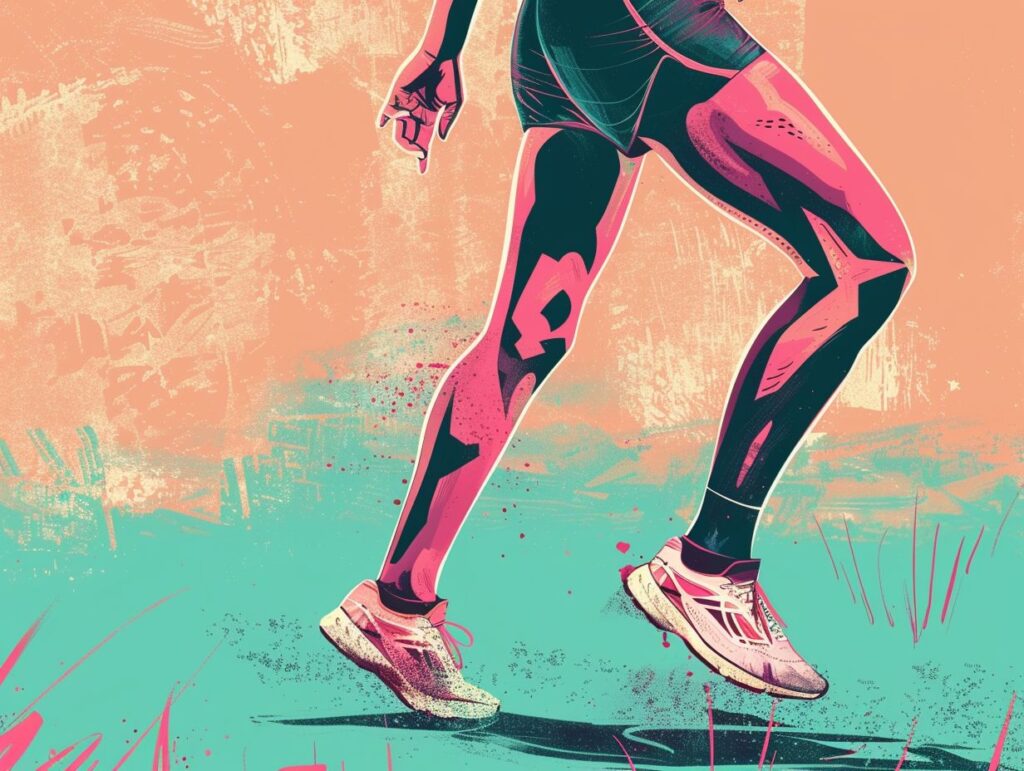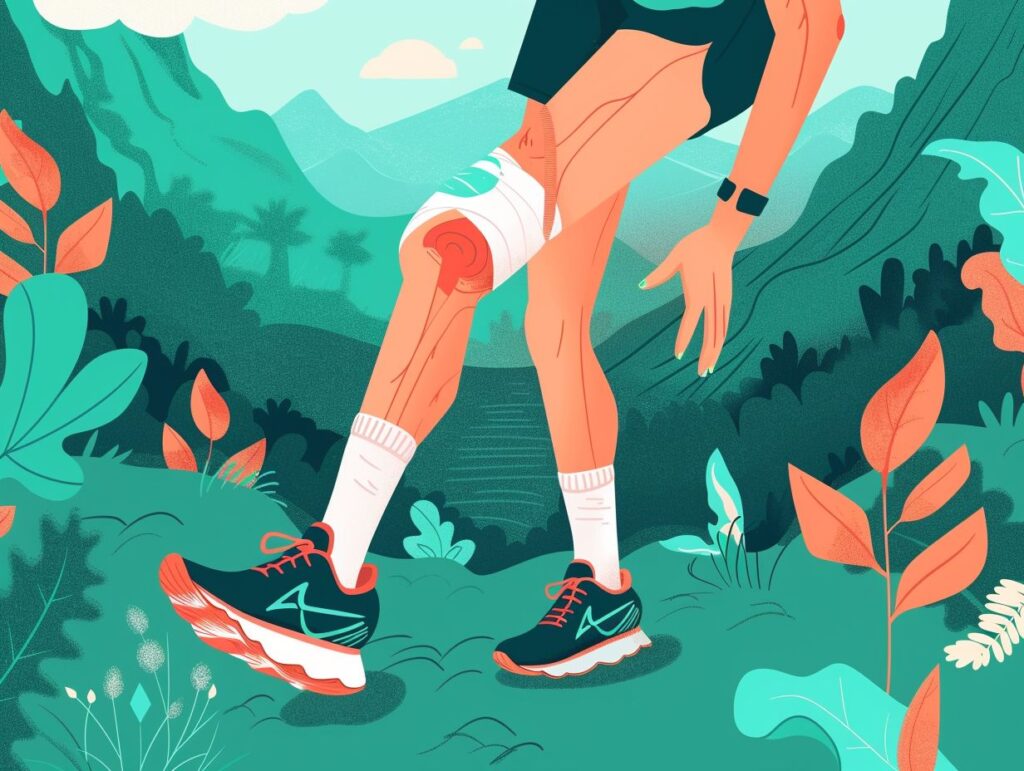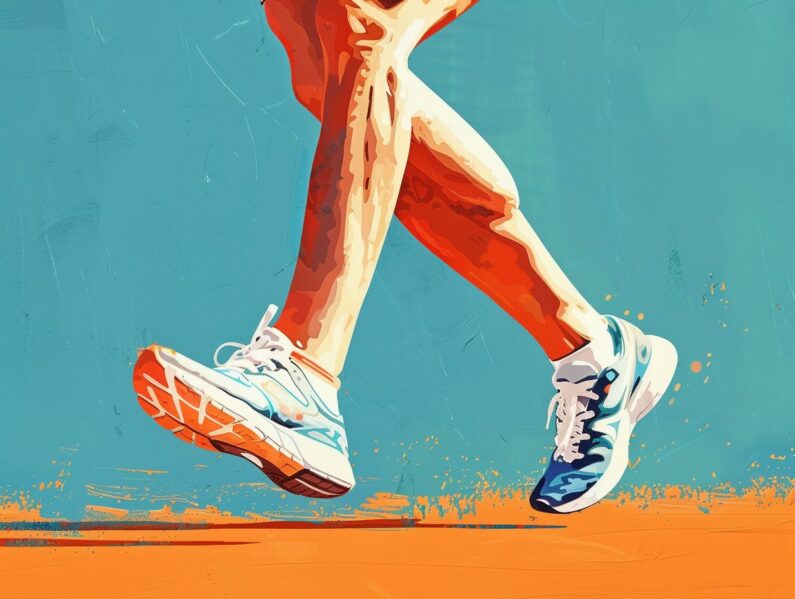Are you a beginner runner experiencing knee pain after your runs?
- We discuss the common causes of knee pain in beginners, such as overuse, poor running form, improper footwear, and weak muscles.
- Find practical tips on how to prevent knee pain, including starting slow, focusing on form, wearing the right shoes, and strengthening your muscles.
- We provide some home remedies for managing knee pain and highlight when it is necessary to seek medical attention.
Learn how to keep your knees healthy and pain-free!
What Causes Knee Pain After Running for Beginners?
Knee pain after running can be a common issue for beginners, often caused by a combination of factors related to running techniques, fitness levels, and muscle imbalances.
Overuse is a significant factor contributing to knee pain in beginners who push themselves too hard without allowing proper rest periods for recovery. Poor running form can also put excessive stress on the knee joints, leading to soreness and potential injury. Improper footwear, such as shoes that lack adequate cushioning or support, can further amplify the impact on the knees during running. Muscle weakness in the quadriceps, hamstrings, and glutes can result in poor knee alignment and stability, increasing the likelihood of experiencing discomfort after running.
Overuse or Overtraining
Overuse or overtraining in running can lead to knee pain, especially for beginners who may push themselves too hard without allowing for adequate rest and recovery.
This can result in various knee issues such as runner’s knee, IT band syndrome, or patellar tendonitis. To prevent these injuries and promote knee health, it’s crucial to prioritize gradual progression in training, incorporate rest days into your routine, and utilize proper recovery techniques like foam rolling and stretching. By giving your knees the support they need through strength training exercises and wearing knee braces if necessary, you can significantly reduce the risk of overuse injuries and maintain your overall joint health.
Poor Running Form
Poor running form can put excess stress on the knees, leading to potential injuries and discomfort, especially for novice runners who may not have established proper biomechanics.
When someone’s running form is off, it can create muscle imbalances and misalignments that amplify the impact on the knees. Biomechanics play a vital role in the distribution of forces throughout the body, and any deviation from the correct posture and stride can increase the risk of developing issues like tendonitis.
By focusing on strengthening key muscles, such as the quadriceps, hamstrings, and glutes, individuals can help stabilize their knee joints and reduce the likelihood of encountering pain during and after their runs.
Improper Footwear
Wearing improper footwear while running can contribute to knee pain, as the lack of cushioning, support, or stability can impact the way the knees absorb shock during each stride.
This is why it is crucial to choose shoes that offer adequate cushioning to help absorb the impact when your feet hit the ground, ultimately reducing the strain on your knees. Proper footwear should provide stability features to maintain proper alignment and support the natural movement of your joints.
By investing in good quality footwear that prioritizes cushioning and stability, you can significantly decrease the risk of experiencing knee pain or other joint issues during physical activities.
Weak Muscles
Weak muscles, especially in the lower body, can contribute to knee pain after running, as they may not provide adequate support and stability for the joints during physical activity.
One effective way to combat this issue is to focus on improving muscle strength through targeted exercises that aid in stabilizing, supporting, and protecting the knee joints. Strength training is crucial in building the muscles around the knees and improving overall stability. By incorporating exercises that target the quadriceps, hamstrings, and hip muscles, individuals can help reduce the risk of knee injuries.
Maintaining a balance between different muscle groups is essential in preventing muscle fatigue and strains, which can also contribute to knee pain. Incorporating regular stretching routines can further aid in improving flexibility and reducing stiffness in the muscles that support the knees, ultimately enhancing overall joint function and decreasing the likelihood of experiencing pain or discomfort.
How to Prevent Knee Pain After Running?
Preventing knee pain after running involves implementing strategies that focus on improving running techniques, enhancing muscle strength, and incorporating proper recovery methods to keep the knees healthy and pain-free.
Starting slowly is essential to allow your body to adapt gradually to the demands of running, reducing the risk of overuse injuries such as knee pain.
Focusing on maintaining proper form while running can help distribute the impact evenly across your joints, including the knees, thus minimizing potential strain.
Wearing appropriate footwear that provides adequate cushioning and support is crucial in reducing impact on the knees during running sessions.
Incorporating muscle-strengthening exercises for the quadriceps, hamstrings, and glutes, as well as regular stretching routines, can help relieve tension and enhance overall knee joint stability.
Start Slow and Gradually Increase Intensity

For beginners, it is essential to start running at a comfortable pace and gradually increase the intensity and duration of the runs to allow the body to adapt and reduce the risk of developing knee pain.
By slowly building up your endurance and fitness level, you give your muscles, joints, and cardiovascular system time to adjust to the demands of running. Pushing yourself too hard too soon can lead to injuries and setbacks that can hinder your progress.
Listening to your body’s signals is crucial in avoiding overtraining or burnout. Remember, progress in running is a journey, and each step forward, no matter how small, contributes to your overall improvement and long-term success.
Focus on Proper Running Form
Maintaining proper running form is crucial in preventing knee pain, as it ensures that the body’s biomechanics are optimized to reduce stress on the knees and lower the risk of injuries.
One of the key elements to focus on for correct running form is maintaining good posture. Keeping the body upright and aligned helps distribute the impact of each step evenly, reducing the strain on the knees.
Paying attention to foot strike can make a significant difference. Striking the ground with the midfoot rather than the heel can decrease joint pain and improve overall body mechanics.
Coordinating arm movement in a relaxed and controlled manner can aid in balance and efficiency while running, ultimately benefiting knee health.
Wear Appropriate Footwear
Choosing the right footwear for running is essential to provide adequate support, cushioning, and stability for the feet and knees, reducing the impact of each step on the joints.
Proper shoe selection takes into account individual biomechanics, such as arch support to help distribute weight evenly, cushioning to absorb shock, and pronation control to prevent overpronation or underpronation.
When these factors align with the runner’s unique foot structure and gait pattern, the risk of injuries, including knee pain and discomfort, can be significantly minimized.
By investing in quality running shoes tailored to your specific needs, you not only enhance your performance but also safeguard your knee health in the long run.
Strengthen Muscles
Incorporating strength training exercises that target the muscles around the knees and hips can help improve stability, reduce imbalances, and support the joints during running, decreasing the likelihood of developing knee pain.
Strong muscles around the knees and hips play a crucial role in preventing injuries and maintaining overall joint health.
Exercises like squats, lunges, and leg presses are excellent for building muscle strength and endurance in these areas.
Activities such as cycling and swimming can also enhance muscle flexibility, aiding in proper joint function.
By addressing muscle imbalances through targeted exercises, individuals can significantly reduce the risk of knee issues and improve their overall athletic performance.
What Are Some Home Remedies for Knee Pain After Running?
Home remedies can be effective in alleviating knee pain after running, offering relief and promoting recovery through simple yet beneficial techniques that can be easily implemented by runners at home.
One common home remedy for knee pain is rest, which allows the muscles and joints to recuperate. Ice therapy can help reduce inflammation and swelling in the affected area. Stretching exercises can improve flexibility and mobility, while foam rolling can help release tension in the muscles surrounding the knee. Practicing self-care techniques like elevating the leg and using over-the-counter pain medications can aid in managing pain. Activity modification, such as avoiding high-impact exercises, can prevent further strain on the knees and support the healing process.
Rest and Ice
Resting the affected knee and applying ice packs can help reduce inflammation, alleviate pain, and promote healing after a run, offering a simple yet effective way to manage knee discomfort.
Taking the time to rest and applying ice therapy are crucial components in the recovery process for knee pain. By providing relief through the reduction of inflammation and soothing soreness, these remedies aid in the overall recovery of the affected area. Swelling can be significantly decreased with consistent use of ice packs, which also helps in improving mobility and flexibility. This restorative approach offers a natural and non-invasive method to address knee pain, supporting the body’s natural healing abilities and promoting a faster return to normal activities.
Stretching and Foam Rolling

Engaging in stretching exercises and foam rolling routines can help improve flexibility, reduce muscle tension, and enhance circulation around the knees, aiding in recovery and preventing future episodes of knee pain.
Stretching and foam rolling are beneficial practices that not only promote overall knee health but also support proper alignment and joint function. Targeted exercises like quad stretches, hamstring stretches, and calf stretches can specifically benefit the muscles and connective tissues around the knees. Foam rolling techniques such as rolling out the quadriceps, IT band, and calves can help release tension and improve blood flow to the knee area, contributing to better mobility and reduced risk of injury.
Over-the-Counter Pain Medication
Using over-the-counter pain medications such as acetaminophen or ibuprofen can help manage knee pain and discomfort after running, providing temporary relief from soreness and inflammation.
These medications work by reducing pain signals and decreasing inflammation, allowing individuals to continue their daily activities with less discomfort. When considering the dosage, it’s essential to follow the instructions on the packaging or consult a healthcare provider. While these medications can be effective for managing post-run discomfort, it is crucial to be mindful of potential side effects such as stomach irritation or liver damage if taken excessively.
It is advisable to use OTC pain medications as part of an overall pain management plan that includes rest, ice, compression, and elevation to support the healing process.
Using a Knee Brace
Wearing a knee brace during or after running can provide additional support, stability, and compression to the knees, reducing strain on the joints and lowering the risk of exacerbating existing injuries.
This added support can help alleviate discomfort during runs by promoting proper alignment and distribution of weight, ultimately reducing the impact on the knees. By aiding in injury prevention, knee braces offer a layer of protection against potential overuse injuries or tears, which are common among runners. The compression provided by the brace can also improve blood flow and reduce swelling, contributing to faster recovery post-run.
Incorporating a knee brace into your running routine can help you run more comfortably, efficiently, and with reduced risk of knee-related issues.
When Should You See a Doctor for Knee Pain After Running?
It is essential to consult a healthcare provider if knee pain after running is severe, persistent, or accompanied by other concerning symptoms, as early intervention and professional advice can help diagnose and address underlying issues.
Some red flags to be aware of include sudden and severe discomfort, excessive swelling, inability to bear weight on the affected knee, or any unusual sensations such as locking or giving way. If any of these symptoms arise, it is crucial to seek medical attention promptly. A sports medicine specialist can provide targeted guidance tailored to athletes and active individuals, offering expertise in diagnosing and treating sports-related knee injuries.
Remember, the sooner you address troublesome knee pain, the better chance you have at preventing further damage and speeding up your recovery process.
If the Pain is Severe or Persistent
Severe or persistent knee pain after running should prompt a visit to a healthcare professional, as these symptoms may indicate a more serious underlying injury or condition that requires medical evaluation and treatment.
Ignoring such discomfort can lead to prolonged suffering and potentially worsen the injury. Seeking early medical intervention aids in identifying the root cause of the pain, whether it stems from overuse, trauma, or structural issues.
A timely diagnosis not only enables targeted treatment but also reduces the risk of developing chronic complications. Appropriate rehabilitation measures prescribed by a healthcare provider can enhance healing, restore mobility, and prevent recurrent issues in the future.
If There is Swelling or Redness
The presence of swelling or redness around the knee joint after running may indicate inflammation or an acute injury, necessitating a consultation with a healthcare provider to assess the extent of the problem and recommend appropriate interventions.
Such warning signs should not be ignored, as they can signal underlying issues that, if left untreated, may lead to further complications. Inflammation can impede proper healing and exacerbate discomfort, potentially hindering your running performance. Seeking medical attention promptly allows for a thorough evaluation of the injury, leading to a tailored treatment plan that addresses both the inflammation and discomfort effectively. Ignoring these symptoms may prolong recovery time and aggravate the condition, affecting your overall athletic capabilities.
If the Pain is Accompanied by Other Symptoms

Any knee pain after running that is accompanied by additional symptoms such as instability, locking, or audible pops should be evaluated by a healthcare professional to determine the underlying cause and appropriate treatment options.
Recognizing these associated symptoms is crucial as they can provide valuable insights into the nature of the discomfort and potential severity of the issue.
For instance, experiencing instability or noticing clicking noises in the knee joint along with pain can indicate more complex problems like ligament tears or meniscus injuries. Ignoring such signs and continuing to push through the pain can lead to further damage and prolonged recovery.
Seeking professional advice promptly can help in early diagnosis and effective management, preventing the condition from worsening.
Frequently Asked Questions
What is knee pain after running beginner?
Knee pain after running beginner refers to discomfort or pain experienced in the knee joint by individuals who are new to running. It can range from mild discomfort to intense pain and is a common occurrence for beginners who are not used to the physical demands of running.
What causes knee pain after running beginner?
There are several possible causes of knee pain after running beginner, including inadequate warm-up, poor running form, overpronation, weak muscles, and inappropriate or worn-out footwear. It can also be caused by underlying conditions such as arthritis, bursitis, or tendonitis.
How can I prevent knee pain after running as a beginner?
To prevent knee pain after running as a beginner, it’s essential to start with a proper warm-up, gradually increase the intensity and duration of your runs, maintain good running form, and wear appropriate shoes. Strengthening the muscles around the knee can also help prevent knee pain.
When should I be concerned about knee pain after running as a beginner?
You should be concerned about knee pain after running as a beginner if it persists or becomes more severe over time, affects your daily activities, or if you experience swelling, redness, or bruising in the knee area. If your knee pain does not improve with rest and basic home treatments, it’s best to consult a doctor.
How can I treat knee pain after running as a beginner?
Minor knee pain after running as a beginner can be treated with rest, ice, compression, and elevation. Over-the-counter pain relievers, such as ibuprofen, can also help reduce pain and inflammation. If the pain persists or is severe, it’s best to seek medical advice for a proper diagnosis and treatment plan.
Can I continue running with knee pain as a beginner?
If you’re experiencing knee pain after running as a beginner, it’s best to take a break from running and allow your knee to rest and heal. Continuing to run with knee pain can worsen the condition and lead to more serious injuries. Consult a doctor if the pain persists to determine when it’s safe to resume running.

My passion for martial arts goes beyond practice; it is a philosophy that shapes my writing, bringing a distinctive edge to my narratives and advice. I hold black belts in two martial arts disciplines and have competed internationally, experiences that enrich my storytelling with authenticity and excitement.

